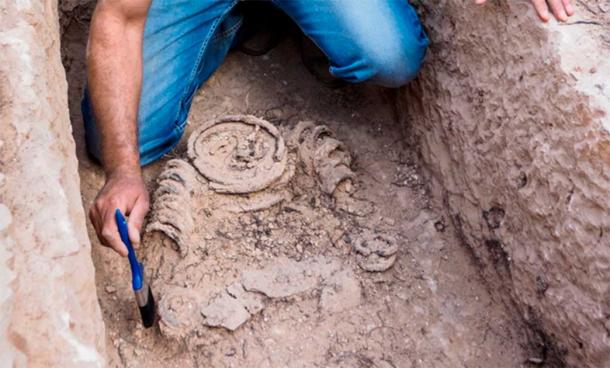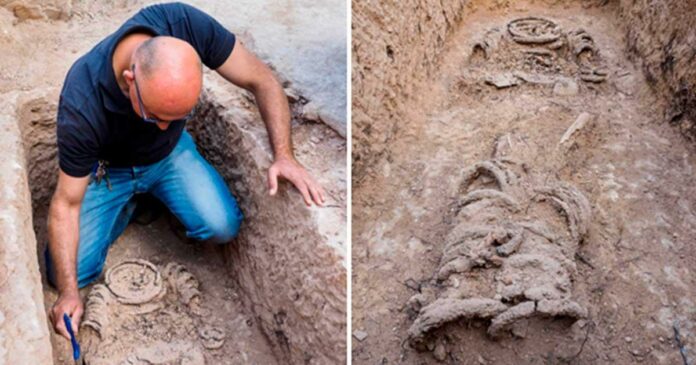Unveiling a Significant Find
Recent excavations at the Khirbat el-Masani archaeological site in northern Jerusalem have led to the discovery of a 1500-year-old skeleton of a Byzantine monk bound in iron chains.
Exploring the Byzantine Ruins of Khirbat el-Masani
Khirbat el-Masani, located on the West Bank, has been the focus of archaeological interest for some time. Previous digs by the Israel Antiquities Authority uncovered a tri-apsidal Byzantine-era church at the site, as reported by Heritage Daily. This church was part of a larger monastery complex that served as a rest house for pilgrims.

Constructed from finely cut limestone ashlars, the church is thought to have been dedicated to Saint Zachary by the priest Sabinus. Saint Zachary, known as the patron saint of peace, was renowned for his work in providing homes for the poor and travelers.
Excavation History
The site first appeared in the Jerusalem Survey Map, leading to a small excavation by Dr. Gaby Mazor of the Israel Antiquities Authority. This initial dig revealed parts of two apses of the church. A more extensive excavation in 2017, led by archaeologists Zubair Adoi and Kafir Arbiv and funded by Moriah Jerusalem Development Corporation, uncovered a large complex. This complex included the monastery, a rest house, and an inn, allowing archaeologists to study the architectural layout in detail.

The Grim Discovery
Within the central apse of the church, a human skeleton was found in a cist grave. The individual was chained with iron rings around the neck, hands, and feet, suggesting he was a monk who practiced extreme asceticism.
Asceticism in Early Christianity
Asceticism, a lifestyle of severe self-discipline, was practiced to attain salvation or redemption from sin, both for oneself and others. This tradition involved fasting and abstinence from sensory pleasures. Early Christian hermits and ascetics, known as the Desert Fathers, often lived in the deserts of Scetes in Roman Egypt to escape pagan persecution.
Over time, more extreme forms of asceticism emerged in eastern Christianity, particularly in Syria during the 4th and 5th centuries AD. These practices included solitary confinement, chaining oneself to a rock or inside a cell, living on minimal sustenance, self-inflicted pain, neglecting personal hygiene, and voluntary suffering. Archaeological evidence suggests that these extreme practices spread as far south as Jerusalem during the Byzantine period (313-636 AD).
Christianity in Ancient Israel
During Byzantine rule, Christianity became widespread in ancient Israel, leading to the construction of churches in Jerusalem, Nazareth, and Galilee. The region was divided into three provinces: Palestina Prima, Palestina Secunda, and Palestina Tertia, all part of the Diocese of the East.
A Rare Practice
The discovery of chained human remains in the region is notably rare. The only other such find was made by Israel Antiquities Authority archaeologist Elena Kogan-Zehavi in 1991 at Khirbat Tabaliya (Givat Ha-Matos), situated between Jerusalem and Bethlehem. This recent find is only the second instance of chained skeletal remains near Jerusalem, indicating that this form of asceticism was not commonly practiced in the region.
Modern Reflection on Ascetic Practices
While fasting and self-deprivation during Lent are still observed in many Christian denominations, the extreme measures of solitary confinement and self-scourging for spiritual purification and penance seem incomprehensible today. Modern science and a materialistic culture may have lessened the fear of hellfire and made hedonistic pleasures more appealing.
This remarkable discovery at Khirbat el-Masani offers a profound glimpse into the severe ascetic practices of early Christianity and the historical context of religious life in Byzantine-era Jerusalem.




